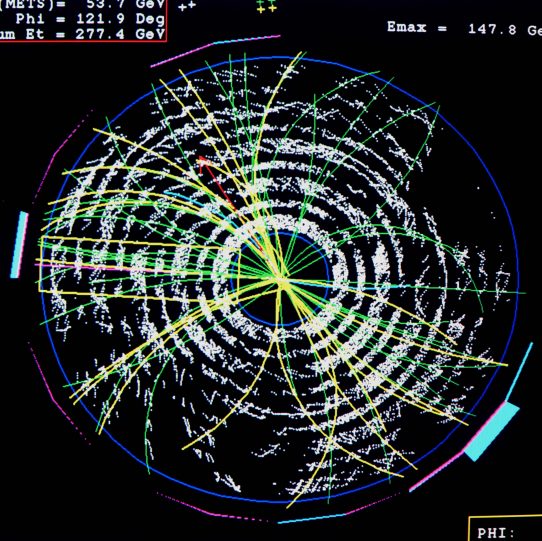A Path to New Physics: Assessing Top Quark Mass at the Large Hadron Collider
Heavy, Short-Lived Elementary Particle Could
Help Refine Understanding of the Universe
MELBOURNE, FLA. — The top quark is a unique little thing.
It is the heaviest known fundamental particle, for starters. Although 100 million times smaller than an atom of gold, it has roughly the same mass. It also has an extraordinarily short lifetime. In fact, the life of a top quark is so fleeting, scientists can only detect its presence by documenting a signature trail of particles left behind as it decays.
But more so than its quirks, the top quark may hold the key to a deeper understanding of the fate of our universe.
If researchers at Florida Institute of Technology, employing pioneering new methods, are able to determine the top quark’s mass at a level of precision as yet unachieved, they will move science closer to understanding whether the universe is stable, as we have long believed to be the case, or unstable.
They are reexamining the mass of the top quark using data collected by the Compact Muon Solenoid (CMS) detector at the Large Hadron Collider (LHC), the world’s largest and most powerful particle accelerator based near Geneva, Switzerland.
The top quark doesn’t get as much love as another particle, the Higgs boson, which with its famous quantum field is responsible for giving all other particles their mass. But the top quark plays an important role in confirming the validity of the underlying theories of particle physics and the state of our universe.
“Not many people talk about the universe as a quantum mechanical system and particle masses but it turns out the stability of our universe as a quantum system depends on the masses of the top quark and the Higgs boson,” said Marc Baarmand, professor of physics and space sciences at Florida Tech who studies the top quark and brought the LHC research to Florida Tech in 2000. “Because the measurements are still not very precise, we are unsure if we are living in a stable or metastable universe.
“The current top quark mass measurements are limited by the systematic uncertainties coming from both data and theory,” Baarmand continued. “The new method aims at an alternative measurement with reduced systematic uncertainties.”
A more precise measurement of the top quark mass, Baarmand added, “could also help open doors to new physics, and perhaps it could help point us to other new particles in the future.”
In addition to their studies of the top quark properties, researchers led by Francisco Yumiceva, associate professor of physics and space sciences at Florida Tech, calibrated and are operating the hadron calorimeter detector, which measures the energy of particles. Another team, led by Florida Tech’s Marcus Hohlmann, professor of physics and space sciences, is developing Gas Electron Multiplier chambers, which precisely measure the trajectories of muons. Florida Tech researchers and their students study the daughter particles produced by top quarks and Higgs bosons as they decay to better understand how these important particles fit into the large physical framework of the subatomic universe. Their research is funded by the U.S. Department of Energy’s Office of Science.
###





